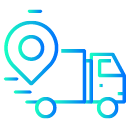Self-driving cars are no longer a thing of the future, they’re here! As this technology progresses, it brings us one step closer to a driverless future. With more computing power, sensors and data than ever before…they are continuously learning and becoming smarter and faster. The question remains: how can we build the infrastructure that these vehicles need to function properly and up to their potential?
This thematic track focuses on the insanely fast technology and infrastructure that needs to be put into place so that high-speed, real-time interaction between machines can happen seamlessly and safely. We examine the potential benefits to society that CAD can bring. Less accidents, less traffic and less pollution. Can all of those things really become a reality? Transportation that’s safer, more affordable and convenient than ever. Is connected and automated driving our ticket to that kind of world? These things sound great, but they can’t be achieved without cooperation – between the tech, telecom and automotive industries, between the public and private sector. Interaction between all of the affected stakeholders is essential – so that the transition to this technology is every bit as seamless as the smart mobility it can potentially provide.

















